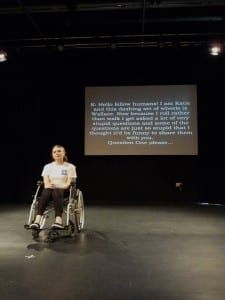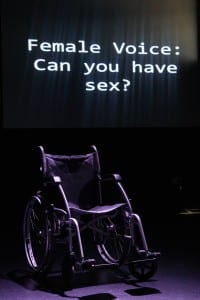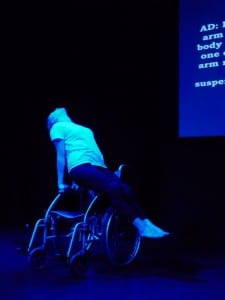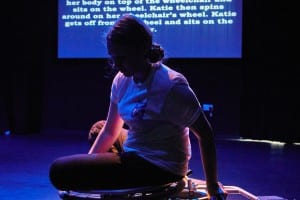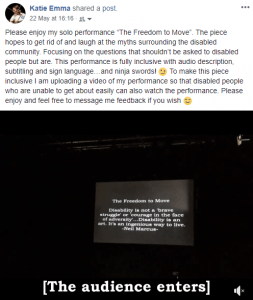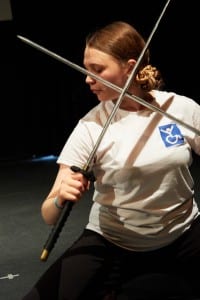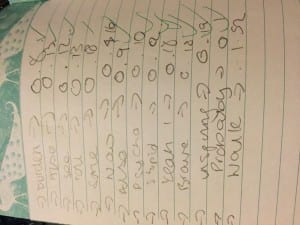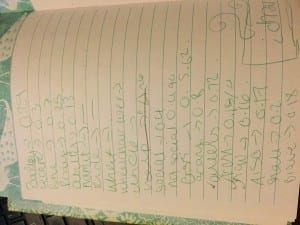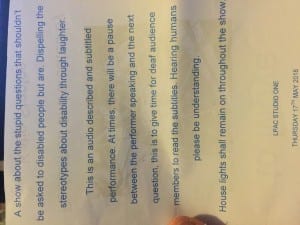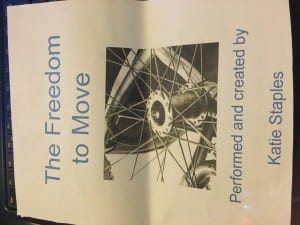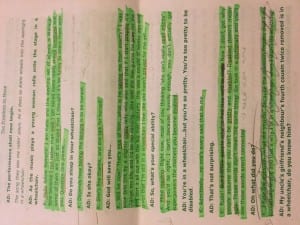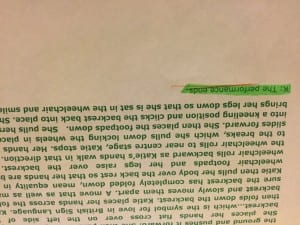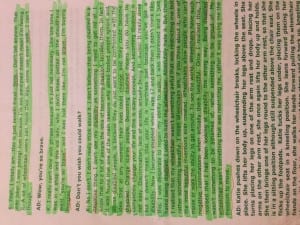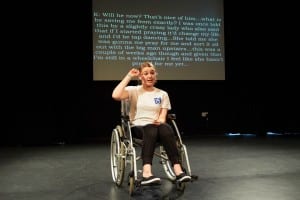Lights:
As previously stated I wanted my performance to be accessible for everyone therefore I decided to light my piece like it was a “relaxed performance” which meant that the house lights (audience lights) remained on throughout the piece. For audience members who have autism, for example, lights going dark can be very distressing and can cause them to become uncomfortable. I don’t believe, however, that lights should stop someone from enjoying theatre which is why I chose to keep the house lights on.
The lights onstage I did not want to be overly complicated. I didn’t want any flashing lights so that people (myself included) who are light sensitive could enjoy the show without any issues. I also made sure that the audio description and the subtitling informed the audience of any light changes in advance as to make sure that that the change in colours did not affect anyone.
For the most part of my show, when I was answering the stupid questions, I decided to go with a warm wash that would light all of the stage. Even though I was performing to the audience, I wanted these sections to have a informal vibe so I could see the audience and they could clearly see me. This also allowed me to interact with audience and talk directly to them. The piece is about dispelling the myths about disabled people and the best way to do this is to have a conversation about it, so I wanted my piece to have an almost conversational feelings even though I was not actually having a conversation with the audience.
^ warm full stage wash for when I was answering questions
There is on section within my piece that deals more with the serious and the nasty side to being disabled and the horrible comments/questions that I get asked. I had an idea of the image I wanted to show in this section and that was to have the wheelchair empty onstage. My wheelchair is the only thing that makes me different from my peers and it’s the thing that labels me as disabled so I wanted the audience to actually have a good look at the chair. I wanted to have a almost clinical spotlight on the wheelchair that lit the chair in a harsh but almost powerful light. The tech team did a brilliant job in bring this idea to life and I’d like to thank them for creating the perfect lighting state for this section.
^ Clinical and slightly creepy but also really highlights the wheelchair.
The final lighting state was for my movement section. With this section I really did not want the lights to seem sad. I wanted the lights to seem powerful. Empowering would perhaps be the best word to describe the movement section and I wanted the lights to reflect this. Purple was the colour that best seemed to suit this word and this was the colour I went for. There are moments in the movement section which are held and are moves that really stand out, me lifting the wheelchair over my head for instance, and I wanted to highlight this moves. To do this the moves were lit with spotlights. These spotlights also created great shadows on the floor which I really liked, especially the shadow of the wheelchair’s wheel spinning.
^ the purple (though it does look slightly blue in the photo) wash for the movement section
^ Spotlight on me spinning around on the wheel of my wheelchair
Camera:
The final part of me making the show fully inclusive was me recording the piece and putting in on my shows Facebook page. Originally when I began this project the idea, that my tutor had given me, had been to live stream the performance however this did not work out as planned so the performance was recorded and then uploaded at a later date. To a lot of disabled people getting out is difficult. Travelling, actually physically moving and access into buildings is not an easy task. When I was first became disabled, I physically could not move. I could not get about and even now I need someone with me to help push my wheelchair around. I also suffered from seizures frequently making it unsafe for me to go to see shows. This, however, should not stop people enjoying theatre. Theatre is supposed to be for everyone however this “everyone” only includes the people who can actually get about, and not people who are physically unable to. I have friends who, like myself, are disabled however their disabilities effect them in different ways to how mine effects me. They are often hospitalized and cannot get about a freely as I can therefore I wanted to upload my performance so that they could also enjoy it. Although this show is just a university assessment, I wanted to make a show that was inclusive to everyone and this, I believe, was the only way to make it truly so.
^ Recorded during tech rehearsal
Action:
To end my blog I thought I would just reflect on how I felt the performance went. I was really happy with how the performance turned out. The audience laughed and some also cried, and the piece got good feedback from them. If I was to do the piece again I think the only thing I would do differently would be to make the piece longer. There were so many other good (by good I mean hilariously stupid) questions I would have liked to include such as “were you born in a wheelchair” but I could not include them as there simply was not enough time. The Freedom to Move is a piece that I would like to develop further and do more with. I feel like it’s a piece that discussed a topic that should really be discussed more and I feel that theatre is a good way to get the discussion about disabilities out in the open. To end this blog I shall leave you with the quote that features in my performance and it’s a quote that has really help me shape my performance.
Disability is not a ‘brave struggle’ or ‘courage in the face of adversity’…Disability is an art. It’s an ingenious way to live.
-Neil Marcus-
[Disabled actor and activist]
